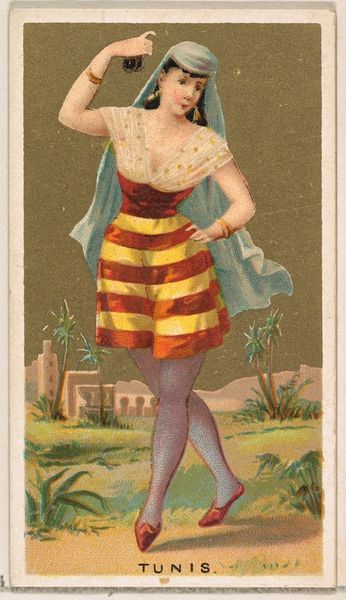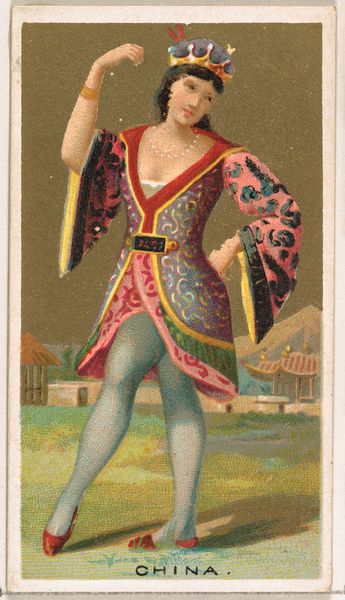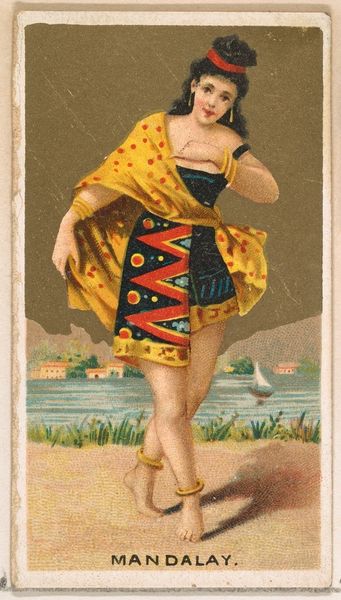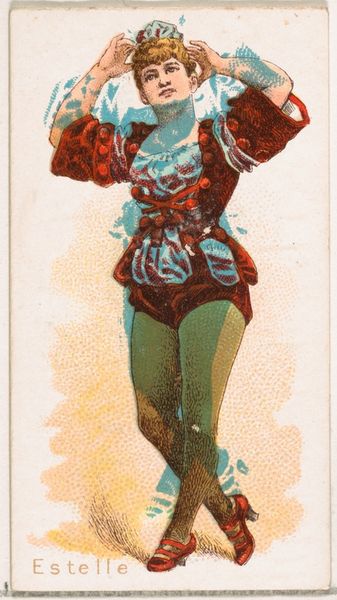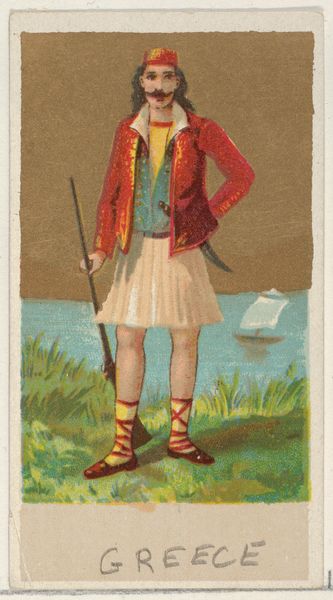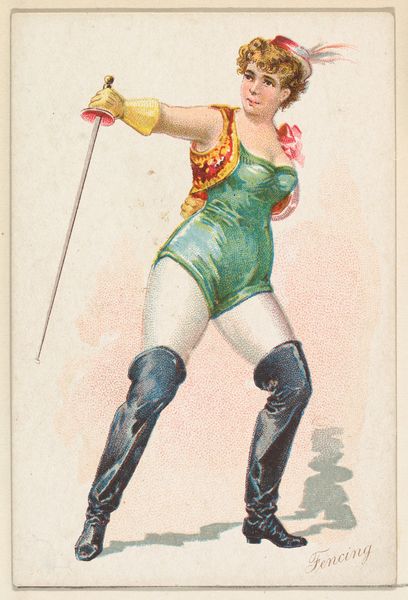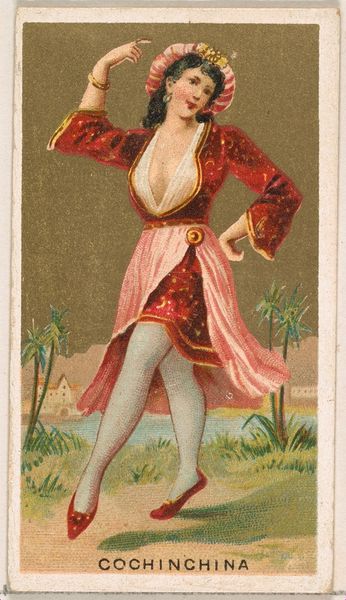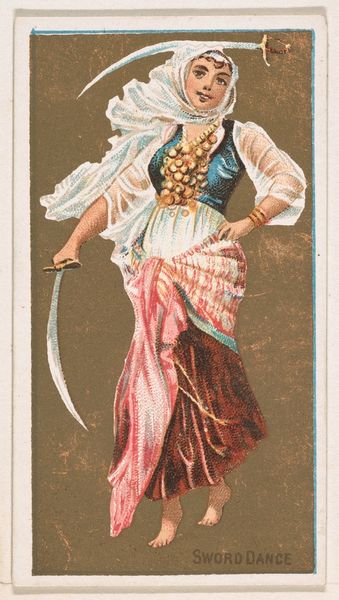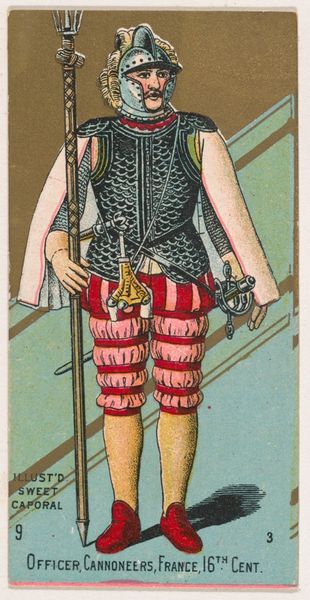
Nippon, from the Dancing Girls of the World series (N185) issued by Wm. S. Kimball & Co. 1889
0:00
0:00
print, photography
#
portrait
# print
#
folk art
#
figuration
#
photography
#
orientalism
#
japonisme
Dimensions: Sheet: 2 11/16 × 1 1/2 in. (6.8 × 3.8 cm)
Copyright: Public Domain
Editor: So, this print is called "Nippon" from the "Dancing Girls of the World" series, created around 1889 by Wm. S. Kimball & Co. I’m struck by how it exoticizes Japanese culture; what's your take? Curator: Indeed. It’s crucial to recognize this image within the context of 19th-century Orientalism and Japonisme. This wasn't about understanding Japanese culture, but about reframing it through a Western lens, often to reinforce existing power structures. What message do you think this image sends? Editor: It seems to be reinforcing stereotypes and maybe contributing to a fascination with the "exotic other," portraying the woman in a way that might be considered hyper-sexualized by today’s standards. Curator: Exactly. These images were often created as collectible cards included with tobacco products. So, how does knowing this, the fact that it was circulated as advertising, impact your interpretation? Editor: That adds a whole other layer. It shows how pervasive these skewed representations were and how deeply ingrained they became in the popular imagination. I guess I never thought about tobacco companies pushing cultural viewpoints like that. Curator: Precisely. We see the influence of social hierarchies, commodification of culture, and the exoticism of the East – all interwoven in a single image meant to sell tobacco. We must see how historical context shapes our perceptions, then and now. Editor: Wow, I’ll definitely look at these kinds of images differently from now on. There's more to it than just pretty colors and designs. Curator: That's right. Questioning these visual narratives is the first step to dismantling the legacies of colonialism and misrepresentation.
Comments
No comments
Be the first to comment and join the conversation on the ultimate creative platform.
